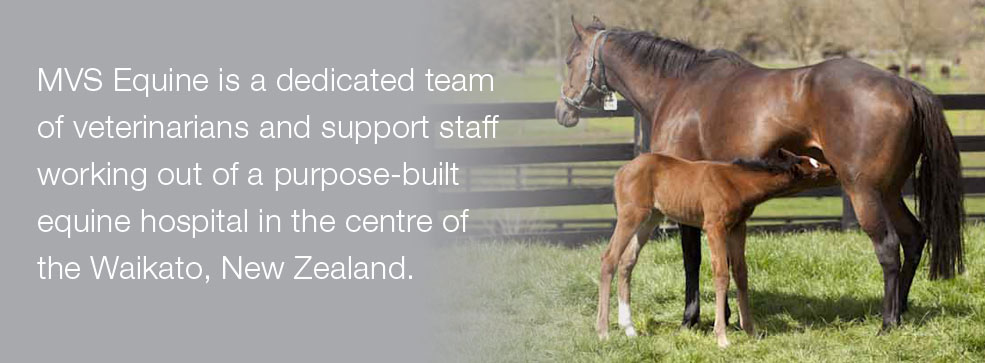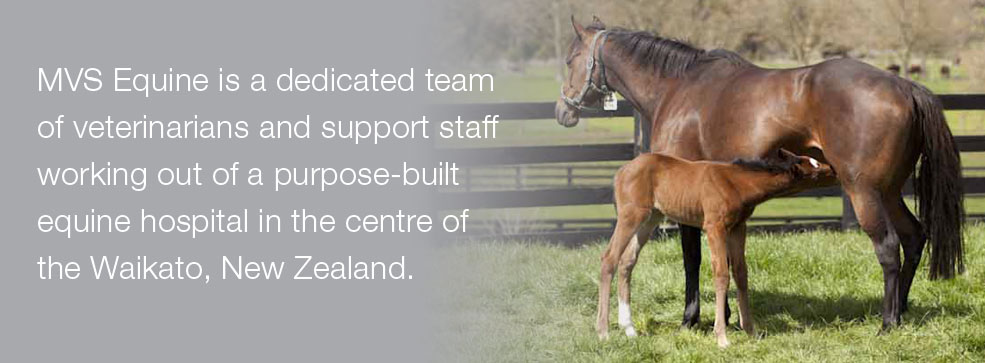Worm Control in Horses: The Way Forward
Worm Control in Horses: The Way Forward
June 6, 2012
Equine owners and managers should be aware of some of the problems facing the equine industry, now and into the future, in our quest to control parasite burdens in horses.
Based on the emerging problems of drench resistance seen with increasing frequency in other species and now in horses, and the clinical effect that parasites have on horses, some insightful and interesting new information is coming to light.
The aims of drenching:
We worm drench young stock (less than 3 years old) primarily to reduce the occurrence of clinical disease. The ‘enemies’ here are:
Tapeworms: (Anoplocephala perfoliata) that can cause spasmodic and ileal impaction colic.
Large roundworm of foals: (Parascaris equorum) can cause diarrhoea, ill-thrift, colic and even death.
Large Strongyles: liver spots and artery blockage. Less common now but not out!
Bots: nasal and intestinal species. Probably not clinically significant in New Zealand but need to be treated.
Cyathostomins: these are the ‘small redworm’ whose larvae can become inhibited in the gut wall and that can cause ill-thrift, weight loss, serious illness, colic and even death when they emerge.
When we drench older stock (greater than 3 years old) we are primarily trying to reduce the amount of eggs that they are putting out onto the pasture that then in turn re-infect the young stock, although sometimes older stock too can be affected clinically if they get large enough worm burdens.
There are three main types (or families) of drenches, Benzimidazoles (white drench, Panacur), Pryrantel (clear drench, levamisole) and the Macrocyclic lactones (Ivermectin, Moxidectin).
Worm resistance has now been reported in horses to ALL of these drench families!
Routinely, the strategy on properties has been to rely on frequent dosing with wormers (anthelmintics), sometimes as often as every four to six weeks. This practice actually encourages resistance to develop and will only work while the chemicals are working. So, resistance is going to become an increasingly frequent occurrence.
So what can be done to slow the development of resistance? Interestingly enough, we actually want horses to be exposed to low levels of worms so that they develop natural immunity against them and we want to leave in the worms that we can kill; not select for the ones that we can’t. This concept is termed ‘refugia’; worms not exposed to anthelmintic that are left in the horse or on the pasture.
We should therefore aim to dose horses based on the results of a Faecal Egg Count (FEC) test and not on a predetermined schedule. This means you can treat horses only when you know they need to be treated. The timing may vary due to climatic conditions, other pasture and stock management practices on the farm, and other factors. The cost and time benefits to drench less often, as well as the benefits to slowing resistance to the drugs we are using is significant. Individual horses shedding large numbers of eggs can also be identified and treated more often, protecting others in the group from these high levels of infection. Monitoring worm burdens in new horses coming onto the property and knowing what products actually work on your property by doing a faecal egg count reduction test are also practical options with FEC tests that can become part of your overall farm management strategy.
Overall our emphasis is moving towards understanding how to manage worm burdens in our horses and not trying to eliminate them completely because we wont be able to. As resistance increases, our options for control and the costs to our horses in poor performance or condition may become more significant than we imagine.
If you have any further questions please talk to your veterinarian or contact us on 07 888 8193.
Putting it into practice;
1. FEC test all individuals on the farm. This may seem like a big job but it is necessary to get a base line of where your farm is at; parasite species present and at what levels. It is best to perform this test at least 2 to 4 weeks after the horses where last drenched.
2. FEC Reduction Testing. The next step will be to run some drench test trials on the farm to find out what wormers work best on your farm. We do this by using the initial results, selecting groups of 8 to 10 horses on which to use different drenches and then rechecking their FEC’s 10 to 14 days later. What we want is a minimum of 95% reduction in FEC in that time to know that those wormers are working. It is important to dose wormers accurately which means estimating weight accurately (or using weigh scales) and administering the drench properly (over the back of the tongue). These initial steps are the hardest but provides essential information.
3. Routine FEC individual horses every 4 weeks based around normal management practices (farriery, moving paddocks, etc). Drench only those individuals with FEC results >200 epg.
4. Strategic Drenches; It is important to realise that ALL horses will still require a minimum of two drenches per year regardless of FEC results. This is because of the complicated nature of the parasites life cycle that we are dealing with in relation to seasonal climatic variations.
AUTUMN; All horses should receive an Autumn drench.
We recommend a product that contains Moxidectin and Praziquantal.
SPRING; All horses should receive an Spring drench.
We recommend a Moxidectin/ Praziquantal combination drench.
Brood mares; This worming schedule should be done at the most one month prior to foaling. This is best to coincide with pre-foaling vaccinations and prior to entering the foaling paddock as to lower worm burdens to new season foals.
5. Quarantine Drenches; When new horses are moved onto the farm we recommend collecting a FEC sample. This gives YOU peace of mind about the biological security of YOUR farm! Why risk the unknown? All horses should be quarantined for a minimum of 7 days for viral and bacterial diseases anyway which gives you time to collect a FEC test, treat the horse as required, and recheck that it has been effective if necessary. We recommend the use of a ‘3 in 1’ combination drench or Moxidectin/ praziquantal combination drench.
6. Foals; Parascaris equorum is the major parasite of importance in foals. This parasite has already developed good resistance to ivermectin based products and so we recommend the use of products OTHER THAN ivermectin (e.g Panacur) to treat this parasite. Worming in foals should start around 6 weeks of age with an Ivermectin/Abamectin based drench. At around 12 weeks of age we recommend either a drench that contains Pryrantel or 5 days of Fenbendazole (Panacur) followed by an ivermectin drench on day 6.
It is important to FEC young stock every 4-6 weeks following this period and use an appropriate product.
What to expect?
We have now trialled this type of regimen in our practice for 4 years with great success. Although initially our clients may question the time spent doing this and the apparent ‘hassle’ of collecting faecal samples we have proven that it is;
- Cost effective; the reduction in use of drenches more than offsets the cost of the FEC tests.
- Time effective; drenching less and incorporating FEC collections into routine management procedures saves expensive labour time.
- Improves animal health; effective parasite control in ALL animals by treating each individually reduces ill-thriftiness and colic and improves feed utilisation.
- Reduces the development of anthelmintic resistance in our parasite population thus preserving the efficacy of the drenches we have available. The likelihood of new products being developed and licensed for use in horses in New Zealand is remote in the foreseeable future.
Please fell free to talk to your veterinarian if you wish to discuss any of these points further and we look forward to being involved in a pro-active approach to parasite control on your farm/ stable.




